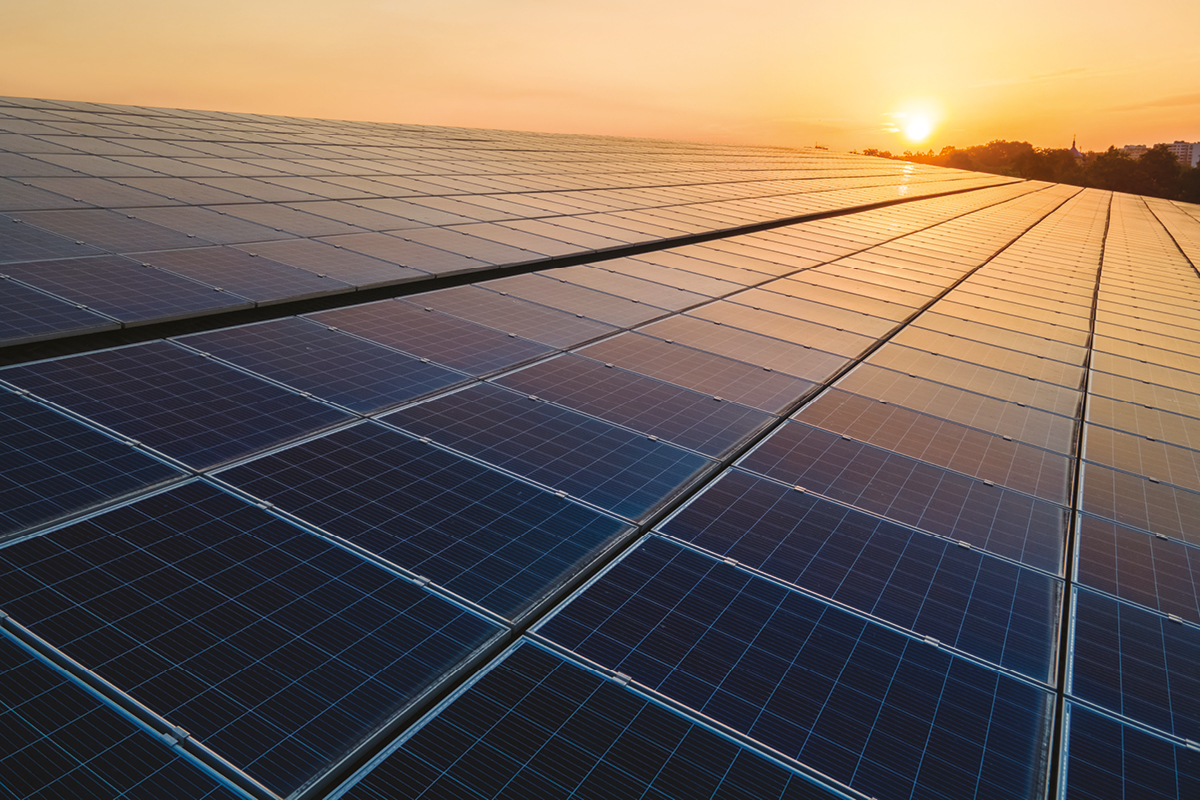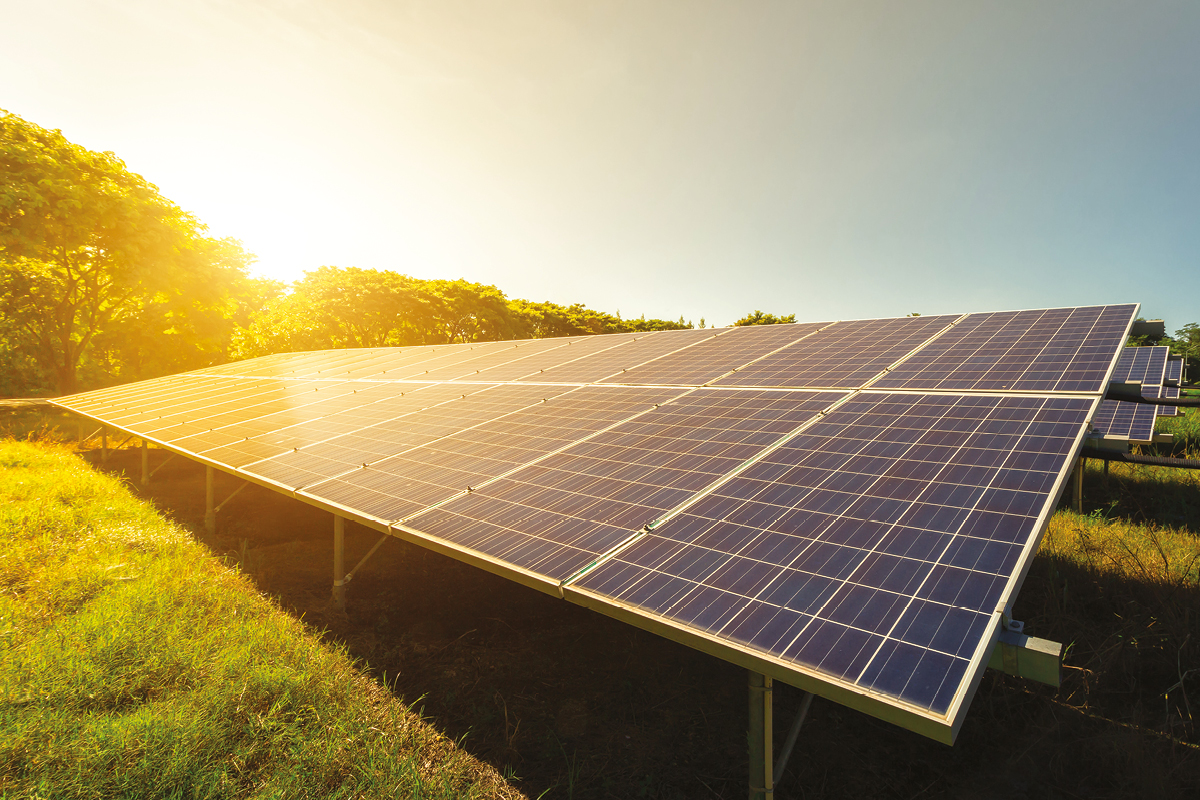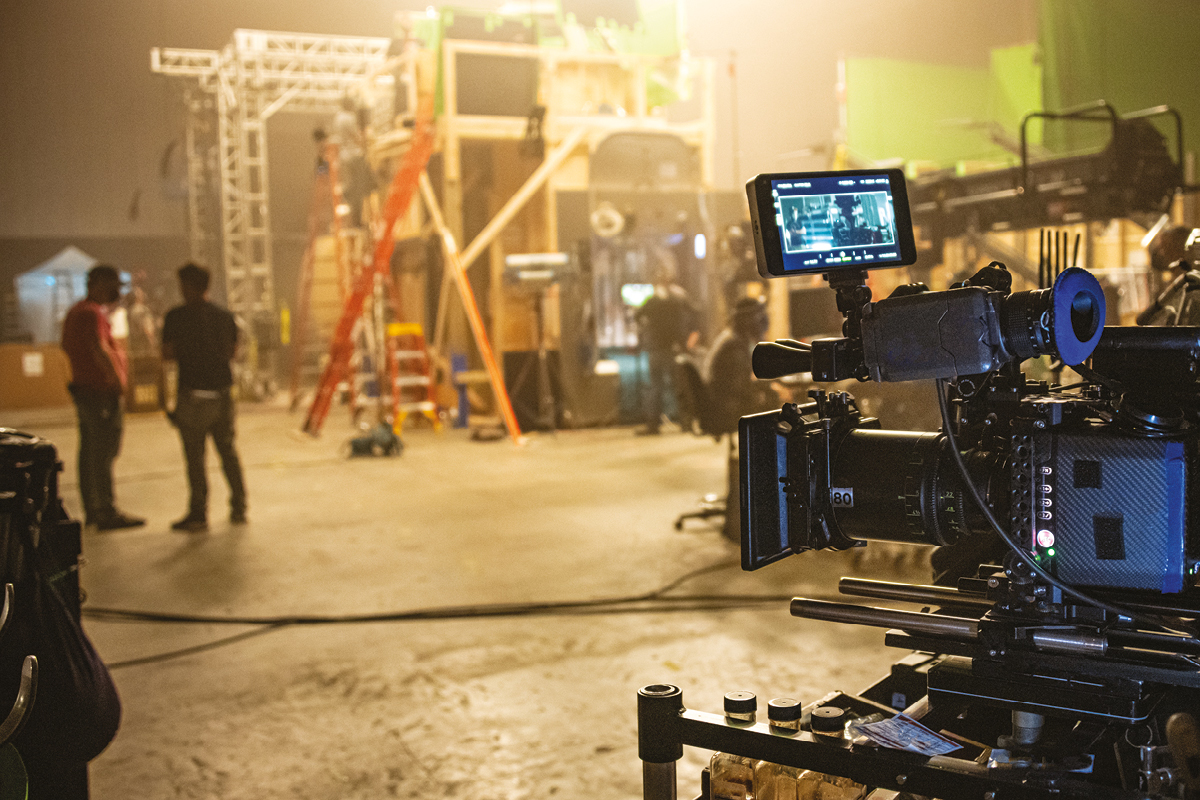
Roundtable: Sustainability in Production
Posted on May 7, 2024 by Samara Husbands
An industry in crisis
The film industry is facing a sustainability crisis. How do we set the scene for a more environmentally friendly future? And what’s standing in the way of progress? A trio of experts share their thoughts
THE PANEL
- François Polarczyk, Sustainability director, Accedo
- Barry Bassett, Owner, VMI
- Paul de Carvalho, Head of studios, 3 Mills Studios
THE INTERVIEW
Definition: What are the biggest sustainability issues in the film industry right now, and what are the most significant roadblocks hindering progress towards better, more environmentally friendly practices?
François Polarczyk: There’s no denying that sustainability is a complicated issue encompassing many different aspects, including both environmental impact and social responsibility.
It includes the impact of materials and resources used in set production and costumes, the carbon footprint associated with travel when transporting equipment and crew, energy consumption from lighting and other equipment, emissions generated by generators, as well as the impact of the content on audience behaviour and its ability to promote positive change.
A lot of companies, both in the film industry and beyond, find the scale of the issue quite overwhelming, so it’s not surprising that it can be difficult for an individual media company to know where to start.
There are a lot of grey areas, as well as difficulties around choosing the right framework for measuring and reporting, which can put organisations off acting because of uncertainty over whether they are taking the right actions to make a difference.
Paul de Carvalho: There are, of course, a huge range of big issues affecting sustainability across the whole life cycle of screen production – from pre-production to post-production and distribution. The biggest issue is how we can ensure that all parts of the production process are committed to sustainability, and that those disparate parts can easily share information and resources to ensure massive action.
The most prominent roadblocks are time and cost.
Addressing sustainability across the industry needs all players to commit time and money to the process – and both of these commitments will affect short-term profits, which makes it a tough decision to focus on.
This investment is absolutely worth it in the long term, and players need to take responsibility to do whatever they can to take massive action right now on sustainability.
Our focus as a studio operator is on how we can make the most impact in our operations, and help our production clients make significant impacts on their sustainability credentials.
The easiest way is through how we provide power. I need to provide the cleanest power I can to the site, and then ensure I am distributing that clean power around the site in a way that ensures my clients’ productions have access to it wherever and whenever they need it.
Site power to all our unit bases (which will be available this year) will mean we can do away with all generators onsite.
We already only allow HVO fuels, but to completely eliminate generators will be a great step.
Barry Bassett: One area to fix is replacing diesel transport.
As an example, we have replaced our Bristol fleet with two EVs; but for London, every time that we look at it, diesel is felt to be the only viable vehicle solution.
If you think 110 miles of range sounds practical for a van, then you should factor that 80% is recommended as the maximum range for everyday use; a cold day and a half-tonne payload may reduce this to only a 40-mile practical range, meaning just one delivery to east London is likely to need a charge for its return trip, so this represents a serious problem for logistics.
However, battery technology is improving all the time – and a new range of hybrid vans is a useful halfway house (we have now ordered two hybrid vans to replace diesels at the end of 2024).
So 80% of our fleet will either be pure electric or hybrid, but achieving 100% is currently out of reach for us.
Another point is that albert has frozen its members listings in order to better appraise the sustainability credentials of approved members.
While albert is being strict about who it acknowledges as accredited suppliers, no suppliers will be pressured into adhering to specific environmental standards.
Def: How can we collectively address these obstacles to pave the way for a more sustainable future in filmmaking?
BB: Transport will be rectified with better batteries, available HVO (biofuels) and maybe with the introduction of hydrogen as an intermediate fuel.
More sustainable equipment choices will certainly help people make better decisions, such as not shooting in 8K Raw when the programme will be delivered in 4K.
Also, people tend to overestimate their power needs, so using battery power stations in place of diesel generators can make a huge impact on carbon emissions.
Simple decisions like this can have a dramatic effect on the carbon footprint of a production.
FP: It’s important, as an industry, that we support each other to become more sustainable and create an environment where we don’t just work in isolation – but work together and learn from one another.
There are several industry-specific organisations focusing on sustainable TV and film production that exist to support businesses in the film industry, and wider media industry, to become more sustainable.
BAFTA albert is one example: providing advice, guidance, tools and resources to help productions reduce their carbon footprints.
It also offers certification to those that meet its standards. Organisations like albert will be critical in helping the industry become more sustainable.
PDC: First, we must commit to taking action – and happily it’s clear that many players have made that commitment.
Then we need to measure the impact of those actions, share information on what is working and what is not, giving out our expertise or lessons learned, and finally commit to taking further action from those lessons.
Def: Can you cite successful examples of projects implementing sustainability in production? What specific factors contributed to their success?
PDC: We are a 200-year-old site, the heart of the Three Mills Conservation Area with several listed buildings as part of the studios, so taking meaningful action on sustainability is no mean feat.
We saw 2022 as a year of gathering data, then 2023 as a year of massive action to improve our performance against the Studio Sustainability Standard.
I’m very happy to say that we have improved our score by over 250% from 2022, and are now ranked ‘Very Good’ by the Standard, with a ranking above the average of all the studios participating in 2023.
But for us, the Sustainability Standard is just a starting point.
We are continuing to work with the BFC and Film London as part of their studio sustainability round tables, which are a great way to share information and best practice.
It is fantastic to hear from experts such as Toby Dare at MBS Equipment on what he and his teams are doing across the MBS-managed studio facilities in the UK and Ireland – and see how facilities like Garden Studios are talking recycling and re-use issues for example.
Garden Studios is now a certified B Corp, which is fantastic.
BB: A recent two-day retriever commercial for Seresto, which was shot in the middle of a field, would have traditionally used a diesel generator.
Instead, the production team took an EcoFlow Delta AC battery power station to set, which included a solar panel.
This solitary AC battery powered the production’s video village where they were far from mains power; the 3.6kWh capacity let us power our monitors for the entire shoot with ease.
Two days of sunlight meant that the solar cells actually increased the charge of the battery even while they were using it!
FP: Sustainable Screens Australia – an initiative operating in Australia and New Zealand – is an excellent example of how albert’s model can be adapted.
The initiative focuses on promoting sustainable practices in the local film and TV industry via events, and offering a directory of sustainable partners that production companies can use.
Also worth mentioning here are the growing number of broadcasters who are promoting sustainable content.
The Dutch arm of the RTL Group is making viewers aware of whether they are watching content produced sustainably or not.
As consumer awareness around sustainability grows, this may start to matter more and more.
Newyonder is a streaming platform that focuses on sustainable and eco-friendly content, showcasing documentaries and series that highlight environmental issues – and have been made following sustainable guidelines. Another streaming platform that specialises in environmental and sustainability-focused content is WaterBear Network.
It offers a range of documentaries and series that raise awareness and inspire viewers to take action.
Def: How do we define and measure success in sustainable filmmaking? Is there a better way to do this, and if so, what might that look like?
PDC: For a studio, I believe the best way is to sign up to the BAFTA albert Studio Sustainability Standard.
We were one of 12 studios who signed up in the first year it was running (2022), and again one of 29 studios who participated in 2023. It is great to see the number of participating studios growing.
The Standard helps us focus on where we can make improvements to reduce our environmental impact over six key areas: climate (drive towards net zero); circularity (minimising waste and use of materials); nature (protecting and enhancing green space); people (wellbeing of visitors, workers, communities and supply chains); management (management, governance and training to improve sustainability); and data (keeping accurate records).
BB: We can’t change everything all in one go. For me, shifting the needle is a better way for the industry to make painful changes.
The first to go were single-use plastics.
Next was tungsten, and soon HMIs will follow the path to retirement, while LEDs have found a path from obscurity to mainstream use.
While there are still die-hards out there, we retired our polystyrene boards some years ago in favour of reusable, flexible diffusion and bounce boards – and others are slowly following.
EVs are now a much more common sight on the road, and many sets ban the use of single-use plastics altogether. Solid-state storage is already much more climate-friendly than the tape stock that it replaced – and which would today be considered a huge environmental cost.
Considering all the steps that our industry has already taken – and with the growing importance of albert making people more climate-conscious – I’d say that we have enjoyed a good amount of success already!
FP: Rather than thinking about sustainability in filmmaking as an end goal, it’s more helpful to think of it as an ongoing journey, with companies implementing practices that minimise environmental impact and promote social responsibility.
In order to measure progress along this journey, companies first need to measure and assess their current impact. Only then can they establish evidence-based targets and define the actions required to meet those targets. Rather than reinvent the wheel, it makes sense to use the carbon calculation tools and certification provided by organisations like albert, mentioned already, to do this.
Def: Are there any resources, tools or organisations you would recommend to filmmakers aiming for sustainability?
PDC: BAFTA albert has great resources, including a green production handbook, Carbon Action Plan and various training opportunities. The BFI, BFC, Film London and other organisations also all have relevant resources and working groups on sustainable production.
FP: Although not industry-focused, the Science-Based Targets initiative (SBTi) deserves a mention as it’s a framework that supports organisations in the private sector to set science-based emissions-reduction targets.
Other media industry-specific organisations, aside from albert, also focus on sustainability. One example is Green Spark Group, which has helped productions like The X-Files to implement more sustainable production practices.
There are also measurement tools that specialise in sustainable production. Prodo – a Holli venture – is one such tool; it’s designed to integrate carbon emissions information into production workflows, making data visible through dashboards for more effective reports and decision-making.
BB: A sustainability group was set up in the late 2010s by a camera assistant called Jason Henwood, which was then further developed and formalised by myself, that represents a consortium of several rental companies collaborating with the sole aim of meeting regularly to share best practice for reducing our collective carbon emissions.
The group shares all its findings openly and useful resources are available to anyone who is interested. You can find out more at rentalsustainability.tv.
Def: In what ways do you envisage sustainability initiatives evolving within film production over the next decade, and what role do you believe technological advancements will play in driving these changes?
FP: Filmmaking, and the wider media industry, is in a different position to a lot of other industries.
It can inspire positive change, raise awareness about environmental, social and economic issues – and even encourage a shift towards more sustainable behaviours and practices.
I expect we’ll see more initiatives within the film industry that set out to create positive changes in consumer behaviour through the use of sustainable storytelling blended with a sustainability ethos.
In terms of technology’s role, we’re already seeing the technology around carbon measurement advance.
This is an area where we’ll see a lot of progress in the coming months and years, particularly with the ability to measure carbon impact in real time. This will allow businesses to assess the current impact and make data-driven decisions for immediate improvements.
While not focused on production, it’s perhaps helpful for filmmakers to be aware of bodies working at the other end of the supply chain – such as Greening of Streaming, Humans Not Robots and DIMPACT.
These organisations work to address and reduce the energy consumption of streaming.
Filmmakers could learn from them and work hand in hand with the rest of the supply chain to reduce emissions on devices – perhaps by tackling the brightness issue of content, which could have a big impact on energy consumption of streaming peripherals, without prejudicating their original creative intent.
BB: I hope filmmakers and producers will consider that their decision about equipment choice and image size can make a marked effect on both their budget and environmental footprint.
Considering viewers rarely (if ever) see productions on anything but HD or heavily compressed 4K, there is little advantage in acquiring at 6K or 8K, though people often do.
Aside from additional memory cards, more transfer time, more media resource for safety copies and in post, more render time and, ultimately, more cost, larger image files demand greater data storage, data movement, post-production rendering and FX.
In turn, this means more energy use and a greater carbon footprint. Bigger isn’t always better if the end user can’t see a difference, especially if cost and extra CO2 emissions don’t justify it. An argument could be made for sticking with 6K in all but the most epic projects.
PDC: Greater cooperation for sustainability across all aspects of the production journey will certainly happen, and this will help energise more people to make greater efforts on sustainability.
Technological advancements in renewable power generation and storage (ie solar film rather than big PV cells) will make onsite power generation easier too.
However, advancements in virtual production and further digitalisation of the production process will also bring challenges in terms of power usage and sustainable digitalisation, which must be addressed.
Def: As we look towards the future of sustainability in film production, what would be your call to action for filmmakers, industry stakeholders and audiences?
FP: Achieving a more sustainable film industry is a shared goal that benefits everyone. It’s important that, as an industry, we collaborate and work together to achieve it.
It’s not going to be easy and we don’t have all the answers yet, but regardless of that, it’s important that we focus now on taking steps in the right direction.
It’s essential that filmmakers and other industry stakeholders don’t work in isolation, but instead draw on all available expertise and support – of which there is plenty.
Crucially, filmmakers and content providers can do more than simply reduce the impact of productions to achieve net zero.
They also have an important role to play in both raising awareness of and engaging audiences with the sustainability agenda.
Media has the power to shape beliefs and change behaviour, and if the film and media industry harnesses this power, it could generate positive change on a global scale.
BB: Neal Romanek from The Flint gives some great advice: “Of course, the most sustainable footage is the footage you don’t shoot at all. Plan ahead.
Take your time. As they say, ‘Measure twice, shoot once.’” I would suggest that filmmakers seriously consider shooting at or near the resolution they are going to master in, since this can have a hidden but real impact on energy and thus their carbon footprint.
If you are delivering in 4K, then don’t shoot in 6K or 8K – and choose an efficient codec instead of either Raw or low-compression if the pictures look good enough.
However, the biggest impact that the industry can have is by not demanding the latest, greatest thing.
We have cameras in our fleet that were leading-edge 4K cameras when new, but which no one wants to rent any more.
We know this is the way that the industry works, but it is really wasteful. We have been asking manufacturers to build circular thinking into their strategies, offering upgrades to equipment models (by upgrading sensors and PCBs, rather than entire units), but they have not been receptive to this idea.
Although we have managed to cut our own carbon emissions by 50% in just three years, still some 90% of our emissions derive from capital expenditure (Scope 3 emissions) of the cameras, lenses, lighting and grip etc that we buy for stock, yet we have no control over this.
We want to give our clients what they want, so until they want to become more climate aware in their equipment choices, then the cycle of new products, new demand, new purchases and more waste will continue. I am not a doomsayer – or an Eeyore! – but that’s the reality of our business.
PDC: Look up!
This roundtable was first published in the May 2024 issue of Definition.














